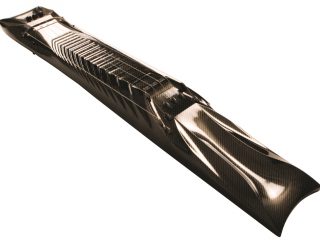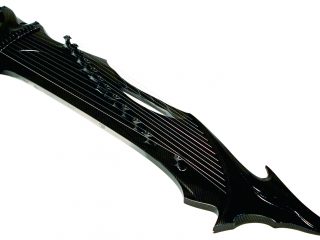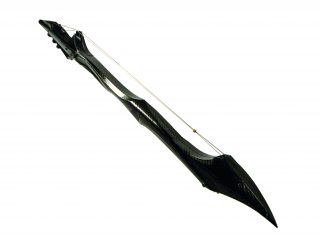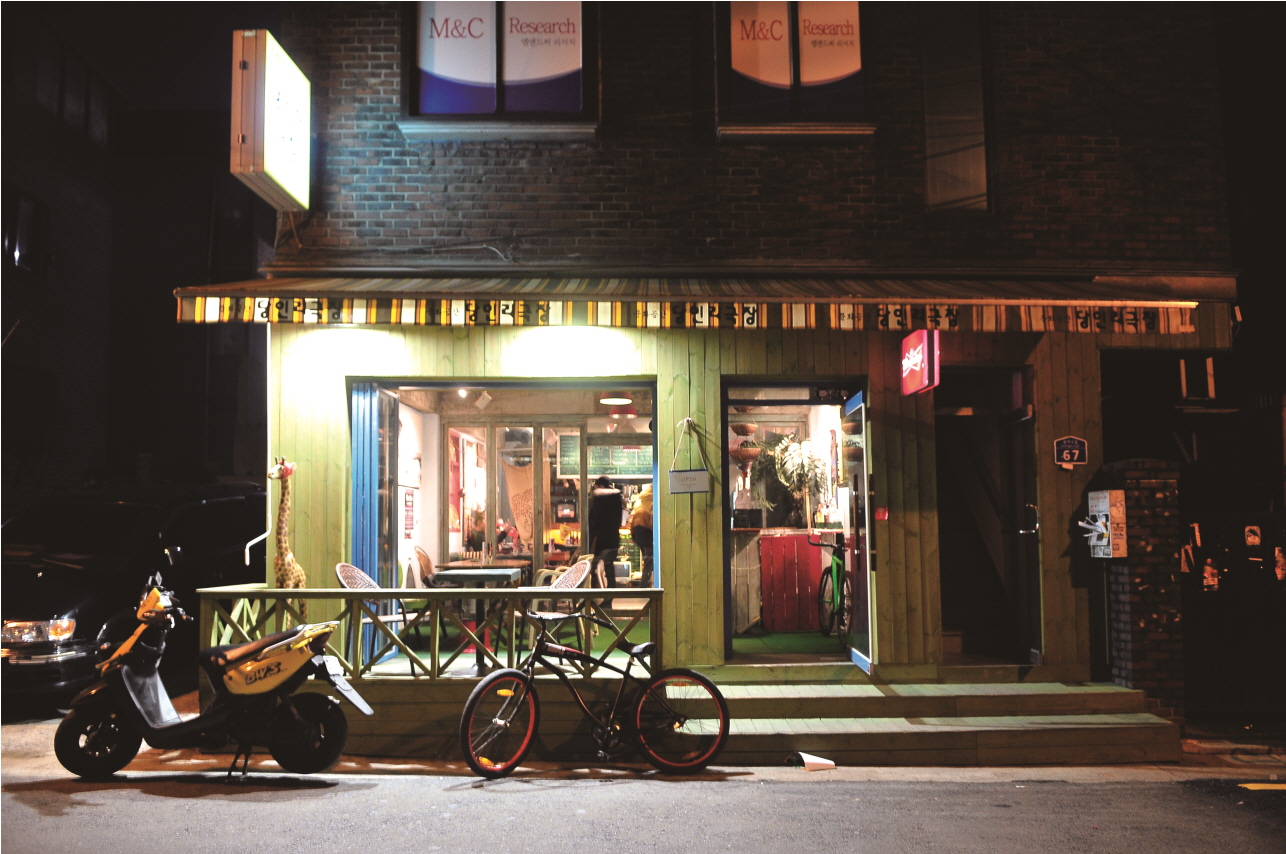[box_dark]
SUPERSONIC EVOLUTION
SuperSound founder KIM DONG-HYUN introduces a new generation of Korean instruments
Written by Ben Jackson
Photograph courtesy of SuperSound
One day in early-21st century London, a curious scene unfolded in Trafalgar Square: as part of a Korean cultural event, two women in hanbok (traditional Korean clothing) sat playing gayageum (classical 12-stringed zithers). In front of them, B-boys put on a display of virtuosic break dancing. Among the crowd that day was expatriate Korean Kim Dong-hyun;
what he saw struck him as a ridiculously ham-fisted attempt at “fusion” between tradition and modernity, prompting him to search for more fundamental ways of developing traditional music.
London legend
Today, Kim is back in Korea. He and his team occupy a fourth-floor studio on a quiet Gangnam backstreet, surrounded by a host of shiny black new instruments that look as if they were developed in the Batcave as sonic weapons for use in the defense of Gotham City. This is the headquarters of SuperSound, the company founded by Kim in order to create a new generation of electric traditional-style Korean instruments.
Kim’s career began as a designer: for 15 years, he lived, studied, and worked in London. After obtaining an MA in Illustration and Animation from Kingston University, he lived the life of a 21st-century Renaissance man, working at a major design company by day while fronting the rock band Hentaigene, as a singer/songwriter, by night. “We headlined at some major venues, like the Ball & Gate and Dublin Castle,” says Kim. The band’s racial profile proved an obstacle to reaching the big time, however; a record label bigwig flatly told him that a rock band fronted by an Asian singer and a black rapper wouldn’t sell to the genre’s predominantly white fans. “On a business level, it made sense,” he says.
Preserving genuine culture
Kim returned to Korea five years ago to lecture in subjects such as film, media and product design at several Seoul universities. He found himself packing in this work after a year, however, in frustration at the various obstacles he encountered in the Korean university education system. Instead, he decided to pursue the development of traditional instruments in a new direction, a choice that stemmed from his ongoing despair at Korea’s attempts at fusing tradition and modernity.
“Look at Japan,” Kim says. “It did a good job of loving and preserving its traditions. Later on, elements of Japanese traditional culture started appearing in designs such as Star Wars costumes. If you want to have real Korean culture, it has to come from the fundamental elements of Korean tradition, otherwise what you get is pathetic. It’s ridiculous to claim that today’s Korean girl ‘idol’ groups represent Korean culture. If you just replace the singers with people from another race, there’s nothing Korean about it at all.”
- geomungo
- gayageum
- haeguem
- janggu
‘I String the Body Electric’
Kim turned his attention to the development of traditional instruments in an attempt to bring change to the country’s traditional musical ecosystem. “Most people who graduate in a traditional instrument at university soon give it up,” he says. “There’s a fixed number of institutional places available; for the rest, there’s nothing to do.” By creating electric traditional instruments with more appeal and—crucially—a much lower price, Kim aims to attract more young musicians, even if they later turn to non-electric traditional instruments. (“There’s actually nothing like the sound of a conventional, silkstringed gayageum,” he says.)
The project began when Kim bought a secondhand conventional gayageum for the equivalent of around US$6,000 dollars. “When I took it apart, I saw that it wasn’t really that well made at all,” he says. “The soundboard wasn’t made from a properly bent piece of flat wood, but sawed in a curved profile. The instrument probably cost about US$60 dollars to make.” After developing a piezoelectric system of pickups housed in the wooden bridge elements of conventional silk-stringed gayageum, for educational purposes, Kim decided to create a whole new sound altogether, introducing steel strings and electromagnetic pickups. The electric gayageum shares the studio floor with other electronic variations on traditional instruments: a geomungo (sixstringed zither), a haegeum (single-stringed fiddle), and a janggu (hourglass-shaped drum), along with the various cables, amplifiers, and pedals used by a conventional rock band. When Kim’s iPhone plays a song recorded by his band using the instruments, the sound is not all that different to a rock track made using Western-style guitar, bass, and drums, though the distinctive sound of the electric haegeum can be made out in places. “This is just my band’s style,” says Kim. “As an instrument manufacturing company, it’s up to us to present new possibilities by creating new hardware. The resulting software is up to the musicians who use it.”
Accessibility vs. obstruction
Inspired by Jimi Hendrix’s propulsion of the Fender Stratocaster from relative obscurity to legendary status, Kim hopes that his modified instruments will be embraced by at least one famous band, thereby boosting their profile. One potential major advantage over conventional instruments is the retail price of around US$300 dollars that Kim envisages. “Even if it doesn’t bring us huge profits, I feel it’s a price we should aim for in order to make a contribution to society.”
“The biggest obstacle to the development of traditional music is traditional musicians themselves,” says Kim. “I’ve been telephoned by a traditional instrument maker who threatened to organize boycotts of my instruments. And no traditional music students will touch them, because their professors tell them not to.”
It remains to be seen what path SuperSound’s uniquely innovative instruments will take when they hit the market in a couple of years’ time. With any luck, they may play a revolutionary role in bringing a more natural relationship between perceived tradition and modernity in contemporary Korea. If the success of the electric guitar in the 20th century is anything to go by, there is absolutely no reason why this should not happen.
Search for “hentaigene” on YouTube to see SuperSound’s latest video.












![네이처 리퍼블릭_ 슈퍼 아쿠아 맥스 컴비네이션 수분크림 [복합성용]](https://magazine.seoulselection.com/wp-content/uploads/2013/05/네이처-리퍼블릭_-슈퍼-아쿠아-맥스-컴비네이션-수분크림-복합성용-.jpg)





